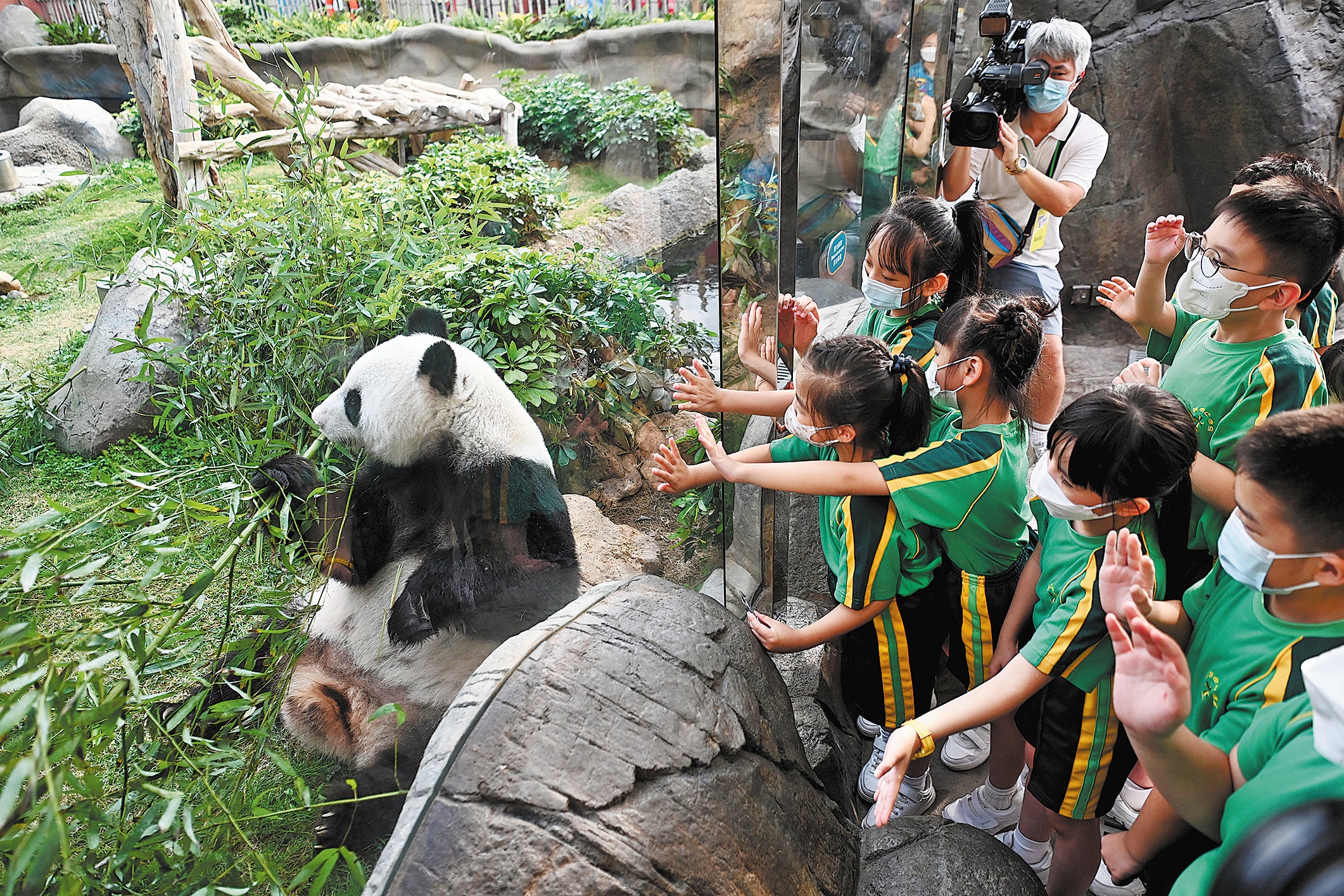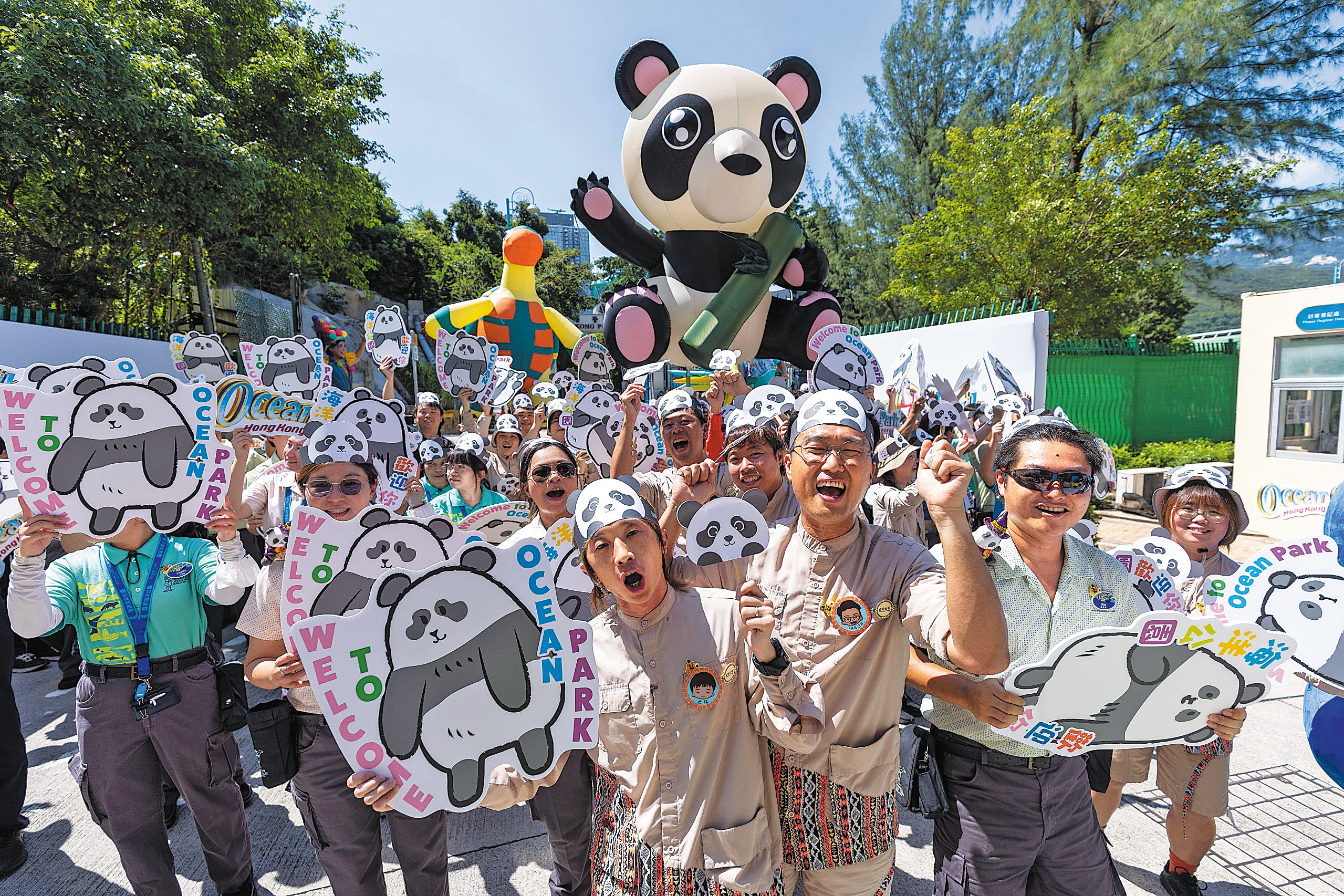Birth of panda twins brings double joy
THE ARTICLES ON THESE PAGES ARE PRODUCED BY CHINA DAILY, WHICH TAKES SOLE RESPONSIBILITY FOR THE CONTENTS

If anyone is happy about giant panda Ying Ying successfully giving birth to twin cubs in August after years of futile mating attempts and a miscarriage, it’s Janet Long Shun-kwan.
Long began looking after Ying Ying in 2009, and was close by during the giant panda’s decade-long efforts to give birth, which started in 2011.
Ying Ying and male panda Le Le were gifted by the central government to Hong Kong in 2007, but several mating attempts had failed to produce cubs.
In 2015, Long accompanied Ying Ying to the Wolong Shenshuping Base of the China Conservation and Research Centre for the Giant Panda in southwest Sichuan province, where the giant panda was to take part in a natural breeding programme.
Long and Ying Ying stayed at the base for six months. The giant panda was able to conceive, but miscarried.
However, the trip was romantically fortuitous for Long. At the base she met Dong Chao, a senior caretaker involved in giant panda breeding since 2003, who later became her husband.
Long returned to Hong Kong, but the budding romance with Dong grew stronger, with their shared passion for giant pandas bringing them closer together.
In 2018, Long, after much soul searching, resigned from her job in Hong Kong and moved to Wolong to start a family with Dong.
The marriage of Long and Dong, thanks in no small part to Ying Ying, embodies the strong bonds between Hong Kong and Sichuan developed through panda connections.
Before Ying Ying and Le Le’s arrival, the central government sent the first pair of pandas — An An and Jia Jia — to the city in 1999 to mark the two-year anniversary of Hong Kong’s return to the motherland.
The 8.0 magnitude earthquake that struck Wenchuan of Sichuan on 12 May, 2008, also brought Hong Kong and the province closer together.
The quake severely damaged the Wolong National Nature Reserve, located less than 13 miles from the epicentre of the temblor in Yingxiu town.
In no time, Hong Kong raced to provide aid to reconstruct Wenchuan. The Hong Kong Special Administrative Region government provided HK$10 billion (£1.01 billion) for 190 projects over eight years.
Twenty-three of them were in the Wolong National Nature Reserve, including Dujiangyan Base and Shenshuping Base — the two panda bases of the China Conservation and Research Centre for the Giant Panda.
The rebuilt Shenshuping Base is the world’s largest giant panda breeding, rearing, and research base. It is also the only training centre in the world for the reintroduction of pandas into the wild.

The base covers an area of about 370 acres, and has 30 panda habitats, a panda hospital, labs and a science education centre.
Hong Kong’s Ocean Park had a significant role in the reconstruction of Wolong. The theme park’s conservation arm, The Ocean Park Conservation Foundation, established the Giant Panda Base Rebuilding Fund, which offered financial support for recovery work at 12 panda reserves in Sichuan.
Paulo Pong Kin-yee, chairman of the Ocean Park Corporation, said the birth of Ying Ying’s twin cubs was further testament to the collaboration between teams in Sichuan and Hong Kong.
When Ying Ying began showing signs she was ready to give birth in late July, the giant panda centre in Sichuan promptly arranged for breeding expert Dong Li and cub-rearing expert Zhang Yahui to travel to Hong Kong.
With the support of the park’s animal care team and the centre’s experts, Ying Ying gave birth to the panda cubs on 15 August, after a difficult five-hour labour.
With the arrival of the twins and the third pair of pandas — An An and Ke Ke — gifted by the central government in September, Ocean Park now has six pandas.
The twins are expected to meet the public in the first quarter of next year when they will be about six months old, Ocean Park caretakers said.
